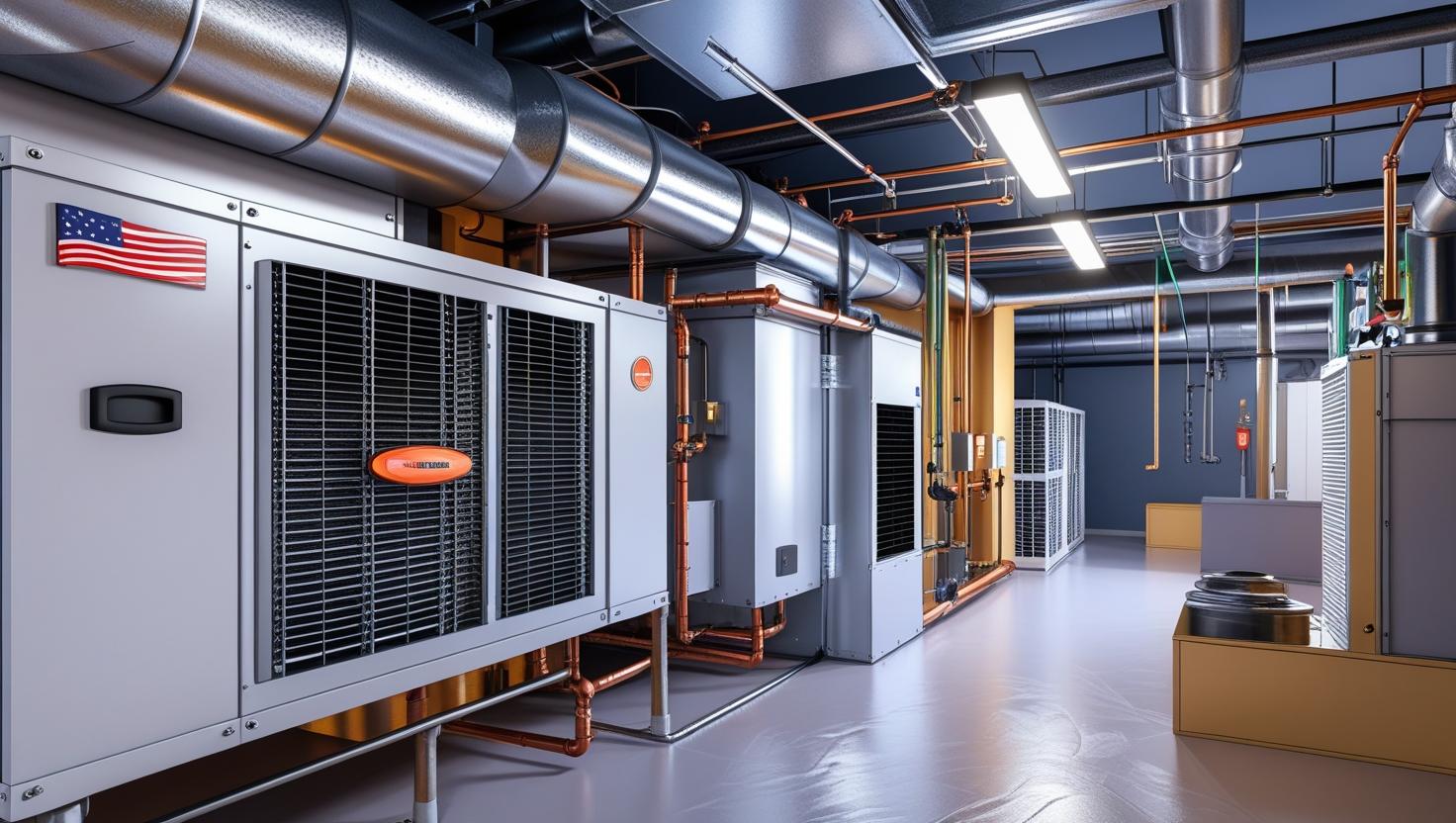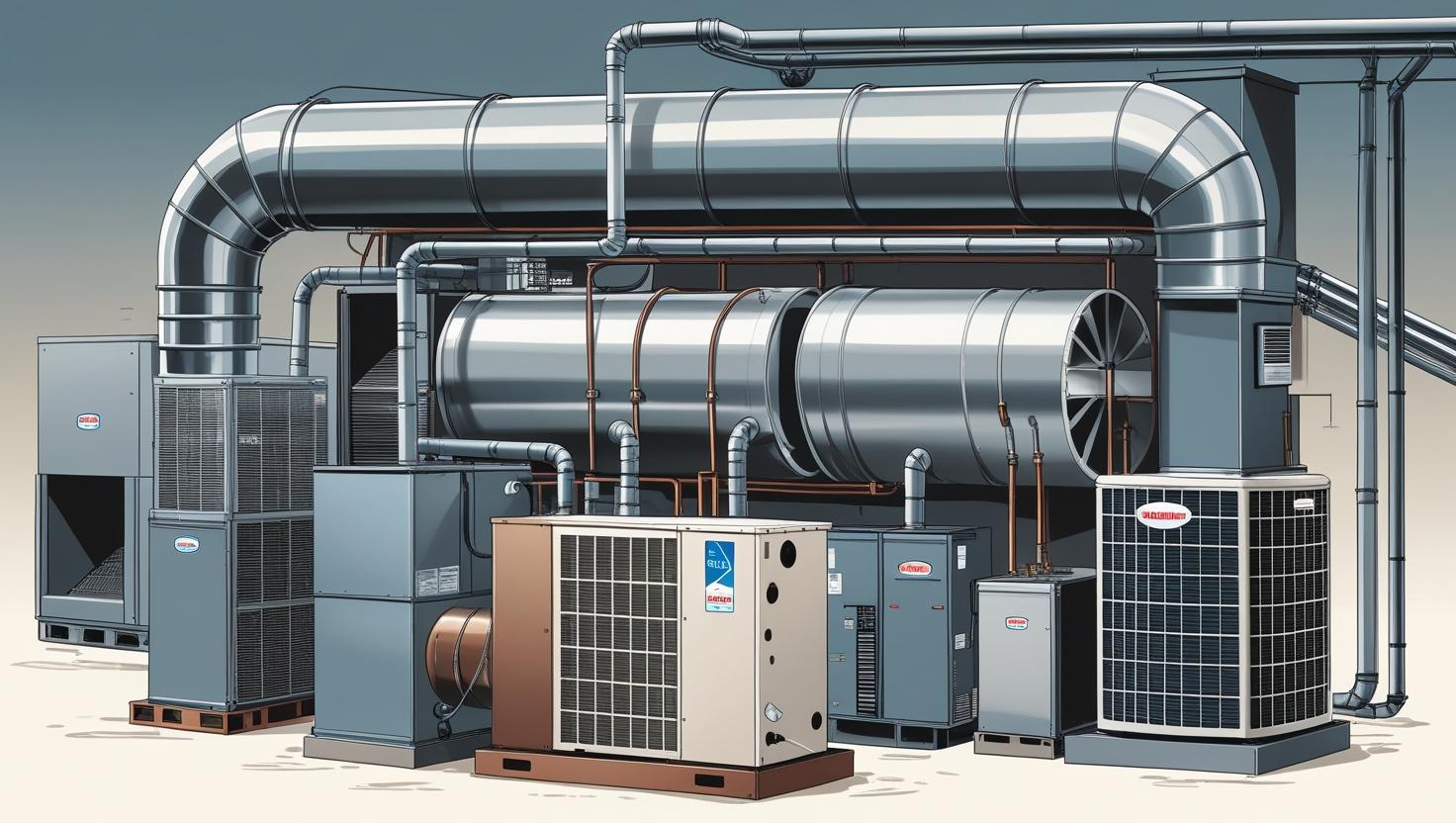The North America HVAC system market is a dynamic and ever-evolving landscape, crucial for maintaining comfortable, healthy, and energy-efficient indoor environments across residential, commercial, and industrial sectors. This comprehensive article will delve into the intricacies of this vital market, examining its current size, significant growth drivers, prevailing trends, the transformative impact of technological advancements, the challenges it faces, and the promising opportunities that lie ahead for the North America HVAC system market. Understanding these facets is essential for stakeholders, from manufacturers and distributors to consumers and policymakers, navigating the complexities and embracing the innovations within the North America HVAC system market.

Understanding the Current Valuation and Growth Trajectory of the North America HVAC System Market
The North America HVAC system market has demonstrated robust growth in recent years, propelled by a confluence of factors. The United States, with its extensive construction activities and a strong presence of major HVAC manufacturers, continues to be a dominant force within the North America HVAC system market. Similarly, Canada is experiencing rapid growth, driven by increasing construction, a focus on energy-efficient upgrades, and supportive government incentives within the North America HVAC system market. The overarching narrative for the North America HVAC system market is one of steady expansion, underpinned by fundamental demands for improved indoor comfort and air quality.
Key Drivers Fueling the Expansion of the North America HVAC System Market
Several powerful drivers are fueling the expansion of the North America HVAC system market. A primary impetus comes from the increasing demand for energy-efficient solutions. As energy costs continue to fluctuate and environmental awareness grows, both residential and commercial consumers in the North America HVAC system market are actively seeking systems that can deliver optimal comfort while minimizing energy consumption and operating costs. This shift is further reinforced by stringent regulatory frameworks, such as energy efficiency standards and ENERGY STAR certifications, which are pushing manufacturers and distributors in the North America HVAC system market to prioritize high-efficiency HVAC units. Systems featuring variable-speed compressors, advanced refrigerants with lower global warming potential (GWP) like R-32, and smart thermostats are gaining significant traction across the North America HVAC system market.
Another crucial growth driver for the North America HVAC system market is the continuous expansion of construction activities across both residential and commercial sectors. New building constructions, coupled with an increasing trend of home renovation and replacement systems, directly translate into a surging demand for modern and efficient HVAC systems. The aging infrastructure in many parts of North America also necessitates substantial investments in retrofitting and upgrading existing HVAC systems, thereby contributing significantly to the North America HVAC system market. Furthermore, the increasing frequency of extreme weather events across the U.S. and Canada has underscored the importance of reliable heating and cooling systems, prompting homeowners and businesses to invest in resilient HVAC solutions, further stimulating the North America HVAC system market.
The Transformative Impact of Technological Innovations on the North America HVAC System Market
Technological advancements are playing a pivotal role in shaping the future of the North America HVAC system market. The integration of smart technologies, such as the Internet of Things (IoT) devices, advanced sensors, and Artificial Intelligence (AI)-driven algorithms, is revolutionizing how HVAC systems are monitored and operated. These innovations enable users to optimize energy usage, enhance comfort, and receive proactive maintenance alerts, all of which significantly improve the user experience and reduce operating costs within the North America HVAC system market. Smart thermostats, for instance, offer unparalleled control and energy management capabilities, making them highly desirable additions to modern HVAC installations in the North America HVAC system market. The advent of predictive maintenance, facilitated by AI and IoT, minimizes downtime and extends the lifespan of HVAC equipment, presenting a significant opportunity for the North America HVAC system market.
Beyond smart controls, advancements in refrigerants with lower GWP are a significant trend in the North America HVAC system market, driven by environmental regulations. The gradual phase-out of high-GWP refrigerants like R-410A in favor of more environmentally friendly alternatives such as R-454B is compelling manufacturers to innovate and introduce new product lines. This transition, while presenting initial challenges, ultimately fosters a more sustainable North America HVAC system market. Furthermore, the increasing adoption of variable refrigerant flow (VRF) systems, offering enhanced energy efficiency and zoned control, is a key technological trend gaining momentum in the commercial segment of the North America HVAC system market. Heat pumps, in particular, are witnessing accelerated adoption, driven by their energy-saving properties and suitability for both heating and cooling applications, making them a cornerstone of the sustainable future for the North America HVAC system market.
Overcoming Challenges within the North America HVAC System Market Landscape
Despite its robust growth, the North America HVAC system market faces its share of challenges. One prominent challenge is the high initial cost of installation and ongoing maintenance of advanced HVAC systems. While these systems offer long-term energy savings, the upfront investment can be a deterrent for some consumers and businesses, especially during periods of economic uncertainty. Another significant hurdle is the constantly evolving and increasingly stringent regulatory landscape concerning energy efficiency, environmental standards, and safety. Government regulations on energy consumption and emissions are becoming stricter, necessitating continuous research and development investments from HVAC manufacturers to meet these evolving requirements within the North America HVAC system market. Compliance can be complex, with varying codes and standards across different states and municipalities, adding to the administrative burden for businesses operating in the North America HVAC system market.
Moreover, the North America HVAC system market is grappling with a shortage of skilled labor. As HVAC systems become more sophisticated and integrated with complex technologies, there is a growing need for qualified technicians who can expertly install, maintain, and repair these advanced systems. The scarcity of skilled workers, particularly in specialized areas such as smart home integration or high-efficiency systems, poses a significant constraint on the North America HVAC system market’s ability to meet rising demand. The aging workforce in the HVAC industry, with many experienced professionals nearing retirement, exacerbates this issue, highlighting a critical need for new talent to enter the North America HVAC system market. Supply chain disruptions and fluctuations in raw material prices also present ongoing challenges for the North America HVAC system market, impacting production costs and lead times.

Exploring Emerging Opportunities in the North America HVAC System Market
Nevertheless, the North America HVAC system market is ripe with opportunities. The increasing awareness of indoor air quality (IAQ) and the importance of healthy indoor environments, particularly amplified by recent global health concerns, is driving demand for advanced ventilation systems and air purification technologies. This focus on IAQ presents a substantial growth opportunity for the North America HVAC system market, as consumers and businesses seek comprehensive solutions that enhance not only comfort but also well-being. Furthermore, the push for net-zero energy homes and buildings, coupled with government incentives and decarbonization efforts, creates a fertile ground for the adoption of highly efficient and environmentally friendly HVAC systems, including advanced heat pump technologies.
The ongoing digital transformation and the increasing integration of HVAC systems with building management systems (BMS) and smart home platforms offer new avenues for growth and innovation within the North America HVAC system market. This integration allows for centralized control, optimized energy management, and enhanced operational efficiency across various applications, from residential dwellings to large commercial complexes and industrial facilities. The retrofit and renovation market also represents a significant opportunity, as a considerable portion of existing buildings in North America are equipped with older, less efficient HVAC systems that are due for upgrades to comply with new regulations and capitalize on energy savings. This ongoing demand for modernization will continue to bolster the North America HVAC system market.
Concluding Outlook on the Dynamic North America HVAC System Market
In conclusion, the North America HVAC system market is on a robust growth trajectory, driven by the persistent demand for energy efficiency, escalating construction activities, and transformative technological advancements. While challenges such as high upfront costs, regulatory complexities, and skilled labor shortages exist, the market’s inherent adaptability and the emergence of new opportunities in areas like indoor air quality and smart building integration promise a bright future. As the focus on sustainability and environmental responsibility intensifies, the North America HVAC system market will continue to evolve, offering innovative solutions that not only enhance comfort and well-being but also contribute to a greener, more energy-efficient North America. The continued investment in research and development by key players within the North America HVAC system market will further solidify its position as a critical and indispensable industry.
FAQs
What are the primary drivers propelling the North America HVAC system market forward?
The North America HVAC system market is primarily driven by the escalating demand for energy-efficient solutions, an increase in construction activities across new builds and renovations, and growing awareness and concern for indoor air quality. Regulatory mandates and government incentives promoting sustainable and high-efficiency systems also play a crucial role in stimulating the North America HVAC system market.
How are technological advancements impacting the North America HVAC system market?
Technological advancements are profoundly transforming the North America HVAC system market. The integration of smart technologies like IoT, AI, and advanced sensors is enabling predictive maintenance, enhanced energy management, and remote control capabilities. Furthermore, the shift towards environmentally friendly refrigerants and the increasing adoption of highly efficient systems like variable refrigerant flow (VRF) and heat pumps are key technological trends shaping the North America HVAC system market.
What challenges does the North America HVAC system market face?
The North America HVAC system market encounters several challenges, including the high initial cost of advanced systems, the complexity of navigating evolving regulatory standards, and a persistent shortage of skilled labor to install and maintain modern HVAC equipment. Supply chain disruptions and fluctuating raw material prices also present ongoing hurdles for the North America HVAC system market.
What are the key opportunities within the North America HVAC system market?
Significant opportunities in the North America HVAC system market stem from the rising focus on indoor air quality, the increasing adoption of smart building technologies and integrated management systems, and the vast potential in the retrofit and renovation segment. The push for net-zero energy buildings and decarbonization initiatives also creates a fertile ground for sustainable HVAC solutions within the North America HVAC system market.
